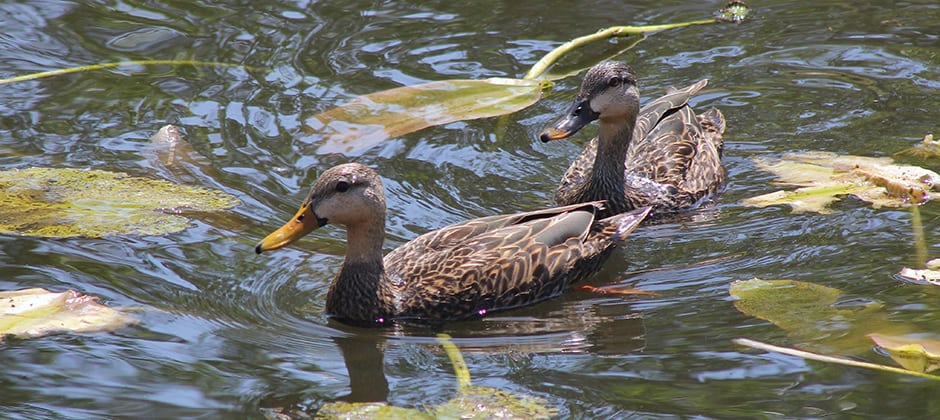Share this article
S.C. mottled duck population healthy for near future
Over the 50 years since mottled ducks were introduced to South Carolina, the results have been mixed. Hunters and others certainly like having them around, but their influence on the local ecosystem and other birds is still an enigma.
Wildlife managers first introduced the ducks in the 1970s to fill what was believed to be an empty niche at the time. The state didn’t have any mottled ducks in its coastal areas, and hunters were interested in having the species. Wildlife managers moved mottled ducks (Anas fulvigula), a duck similar to mallards (Anas platyrhynchos), bringing the birds to South Carolina from endemic populations in Florida (A. f. fulvigula) and from the western Gulf Coast (A. f. maculosa) in Texas and Louisiana.
“Low and behold, they did well,” said Brian Davis, an associate professor in wildlife science at Mississippi State University. But in the decades since, the introduction has had both positive and negative outcomes, Davis argues in a review published recently in Ecology and Evolution subtitled “The ugly, the bad, and the good?”
“From a hunting standpoint, they are really popular, and birdwatchers like to see them,” Davis said. Hunters appreciate the challenge these wary ducks present. Birdwatchers enjoy their uniquely patterned dark plumage.
One of the uncertainties with this move lies with ecological consequences. It’s still unknown how these introduced mottled ducks interact with existing species in coastal wetlands. Fortunately, Davis said, the habitat niche mottled ducks exploit was open in the area, but if there any downsides, they aren’t well known. Mottled ducks may compete for food or nesting space with secretive marsh birds or shorebirds, like stilts, for example.
One potential consequence associated with this move may be linked to genetics. The South Carolina mottled ducks are now basically the same genetic stock as those in the western Gulf. If the South Carolina mottled ducks move frequently into Florida, some ecologists worry the mottled ducks there would be contaminated by the Texas and Louisiana gene pool. Nonetheless, things like sea level rise and habitat loss will continue to exert pressure on mottled ducks. It may be that one day, mottled ducks may experience inbreeding depression, Davis said, but “right now the mottled ducks are nowhere near that.”
Rather than diluting the Florida gene pool, Davis said that the South Carolina population may act as a reservoir in case of population declines in Florida or other regions of the species.
Header Image: Mottled ducks are found in two populations in Florida, and from Alabama to Mexico. Credit: Under the same moon...








